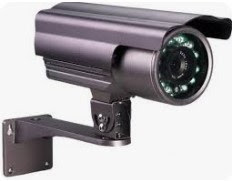Testing an Ethernet cable using a
cable tester is a
straightforward process. A cable tester helps identify continuity issues,
shorts, and other problems in the cable. Here's a step-by-step guide on how to
test an Ethernet cable using a cable tester:
Materials Needed:
1. Ethernet cable tester
2. Ethernet cable to be tested
Procedure:
1. Turn Off Devices:
Ensure that both ends of the Ethernet cable are disconnected from any
devices such as computers, routers, or switches. This helps isolate the cable
for testing.
2. Inspect the Cable:
Examine the cable for any visible physical damage, such as cuts, kinks,
or exposed wires. If you find any damage, consider replacing the cable.
3. Prepare the Cable Tester:
Connect one end of the Ethernet cable to the "Source" or
"Transmitter" port on the cable tester. Connect the other end of the
cable to the "Remote" or "Receiver" port on the tester.
4. Power on the Cable Tester:
Power on the cable tester according to the manufacturer's instructions.
Some cable testers may have a built-in battery, while others may need an
external power source.
5. Run the Test:
Initiate the test on the cable tester. The tester will send signals
through the cable and analyze the responses from the other end. The tester will
indicate whether the cable has passed or if there are any issues.
6. Interpret the Results:
Most cable testers have LED lights or an LCD display to indicate the
status of the cable. Here's what to look for:
Ø Continuity:
Ensure that there is a continuous signal from one end of the cable to the
other. This is typically indicated by a series of lights or a display showing a
continuous line.
Ø Shorts or
Crossed Wires: The tester will indicate if there are any shorts or crossed
wires, often with specific lights or error codes.
Ø Polarity: Some
cable testers can check for correct polarity, ensuring that the wires are in
the correct order.
7. Troubleshoot if Necessary:
If the cable tester indicates an issue, you may need to troubleshoot and
repair the cable. Common issues include damaged connectors, broken wires, or
incorrect wiring.
8. Label or Replace:
Once the cable passes the test, you can label it for identification. If the cable fails the test and you're unable to repair it, consider replacing it with a new one.
By following these steps, you can use a cable tester to quickly identify and address any issues with your Ethernet cables, ensuring reliable network connectivity.








0 Comments